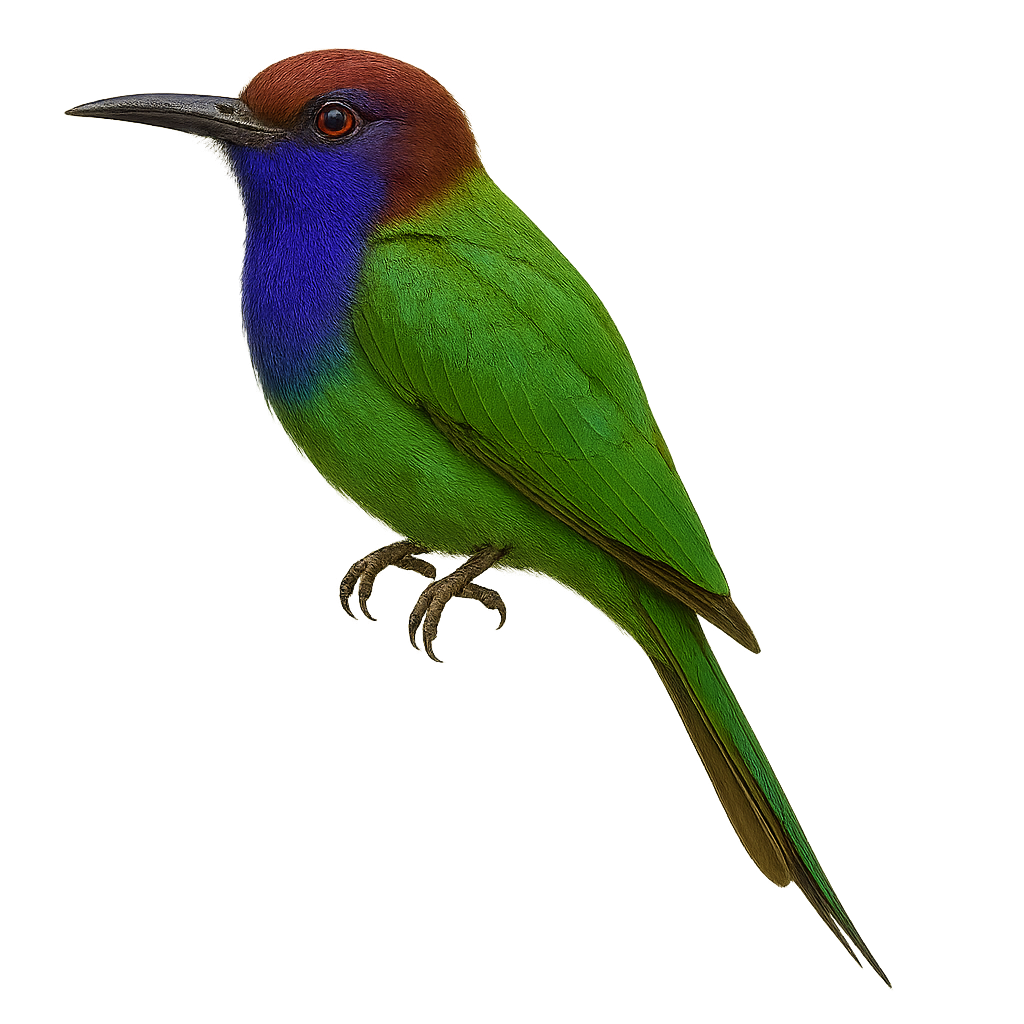Your wildlife photography guide.
Explore the purple-bearded bee-eater in detail, study its behavior, prepare your shots.
Where to observe and photograph the purple-bearded bee-eater in the wild
Learn where and when to spot the purple-bearded bee-eater in the wild, how to identify the species based on distinctive features, and what natural environments it inhabits. The WildlifePhotographer app offers tailored photography tips that reflect the purple-bearded bee-eater’s behavior, helping you capture better wildlife images. Explore the full species profile for key information including description, habitat, active periods, and approach techniques.
Purple-bearded Bee-eater
Scientific name: Meropogon forsteni

IUCN Status: Near Threatened
Family: MEROPIDAE
Group: Birds
Sensitivity to human approach: Suspicious
Minimum approach distance: 10 m
Courtship display: August to October
Incubation: 20-22 jours
Hatchings: August to November
Habitat:
Tropical forests, wooded areas, dense canopies
Activity period :
Primarily active during the day, with peak activity in the morning and late afternoon.
Identification and description:
The Purple-bearded Bee-eater is a colorful and fascinating bird endemic to the forests of Sulawesi, Indonesia. It is distinguished by its purple beard and bright green plumage, which allow it to blend into the dense canopy. This bird measures about 25 cm in length and primarily feeds on insects, especially bees and wasps, which it catches in flight with its slender, elongated beak. The Purple-bearded Bee-eater is a sociable bird, often seen in small groups. It prefers humid forest habitats and wooded areas at mid-altitude. Although its conservation status is concerning due to deforestation, it remains relatively common in some protected areas.
Recommended lens:
400mm – adjust based on distance, desired framing (portrait or habitat), and approach conditions.
Photography tips:
To photograph the Purple-bearded Bee-eater, it is advisable to use a 400mm lens or longer to capture sharp images from a distance. As this bird is suspicious, it is best to remain discreet and blend into the environment. The tropical forests where it resides offer filtered light, ideal for natural-colored shots. Opt for early morning or late afternoon hours to benefit from soft light and avoid harsh shadows.
The WildlifePhotographer App is coming soon!
Be the first to explore the best nature spots, track rutting seasons, log your observations, and observe more wildlife.
Already 1 431 wildlife lovers subscribed worldwide

